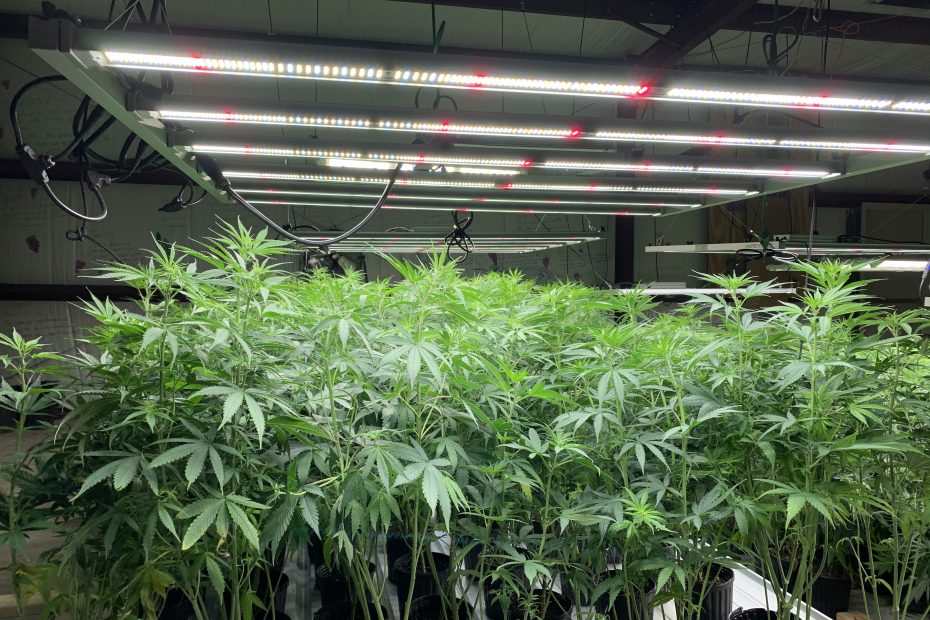Part: 1
In recent years, the cannabis industry has seen a significant rise in popularity, with some referring to it as a “green revolution.” However, with the legalization of cannabis spreading across the world, it’s important to recognize the potential impact of Cannabis Crop Management on the environment. While there are certainly benefits to cannabis use, it’s crucial to acknowledge the environmental challenges that come with it. In this article, we’ll delve into the environmental impact of the cannabis industry and suggest sustainable solutions for a more eco-friendly future.

I. The Energy Intensive Cultivation Process:
Underneath the glossy facade of the cannabis industry lies a stark reality—cannabis cultivation is an energy-intensive process. Indoor cultivation, the most common method employed, demands significant amounts of electricity to power grow lights, ventilation systems, and climate control mechanisms. This energy consumption not only strains the grid but also contributes to greenhouse gas emissions.
To mitigate this issue, innovative techniques such as LED lighting and energy-efficient HVAC systems have emerged. Additionally, outdoor cultivation, leveraging natural sunlight, can significantly reduce energy requirements. By adopting sustainable cultivation practices, such as utilizing renewable energy sources and optimizing resource usage, the industry can make strides toward minimizing its carbon footprint.
II. Water Consumption and Ecological Impact:
Another significant concern is the water consumption associated with cannabis cultivation. Growing cannabis requires substantial amounts of water, often surpassing that of traditional crops. This demand poses a strain on water sources, especially in areas already facing water scarcity issues.
Implementing efficient irrigation systems, such as drip irrigation, and adopting water-saving technologies can help alleviate this strain. Additionally, embracing regenerative agricultural practices, such as capturing rainwater and recycling runoff, can reduce the environmental impact and foster water conservation.
III. Chemical Usage and Soil Health:
The use of chemicals, including pesticides and fertilizers, is prevalent in the cannabis industry. While these substances may be necessary for pest control and maximizing yields, they can have detrimental effects on the environment and human health if misused or overused. Moreover, improper disposal of these chemicals can contaminate soil and water sources, posing long-term risks. Innovation soil media help reduce the depletion of natural resources in some respects, living soils can be regenerated, grow pellets may be reused, and deep water culture is gaining in popularity.
To combat this issue, strict regulations and comprehensive testing protocols are crucial. Encouraging organic and sustainable farming practices, such as integrated pest management and composting, can promote healthier soils and reduce the reliance on harmful chemicals.
IV. Plastics, Waste, and Sustainable Solutions:
The cannabis market is flooded with an abundance of single-use plastic materials, and it starts with cultivation. A single cultivation operation could easily discard thousands of pounds of nylon trellising waste each year. Often made from non-recyclable plastics, these materials contribute to the global waste crisis. A sustainable trellising solution could eliminate thousands of pounds of plastic waste each year across the world when implemented in cannabis crop management. Moreover, excessive packaging for consumers not only generates unnecessary waste but also adds to transportation emissions.
To address this issue, industry stakeholders must prioritize sustainable management solutions. Utilizing eco-friendly materials, reducing packaging sizes, and exploring innovative alternatives can help minimize the environmental impact. For example, Green Tree Scrog’s patent-pending reusable trellising system eliminates plastic waste generation. Additionally, encouraging recycling programs and promoting consumer awareness about sustainable consumption practices can further contribute to waste reduction.
V. Community Engagement and Social Responsibility:
While environmental sustainability is paramount, it is equally important to address social and community impacts. The cannabis industry should prioritize community engagement, fostering positive relationships with local residents, and addressing concerns such as odor control, light pollution, and employment opportunities.
Furthermore, promoting equity and diversity within the industry can help rectify the historical injustices associated with cannabis prohibition. By providing fair employment opportunities and supporting social equity initiatives, the industry can contribute to positive social change.
Conclusion:
The cannabis green revolution is not without its flaws, and acknowledging the industry’s environmental challenges in cannabis crop management is essential for sustainable growth. By embracing innovative solutions, such as energy-efficient cultivation methods, water conservation practices, responsible chemical usage, sustainable packaging, and community engagement, the cannabis industry can pave the way for a greener future.
It is our collective responsibility to hold the industry accountable and encourage a shift toward sustainable practices. By prioritizing environmental stewardship, we can ensure that the so-called cannabis green revolution truly lives up to its promise, benefiting not only individuals but also the planet we call home.
Part 2 of 4: Plastic Waste Generation and Cost Analysis
